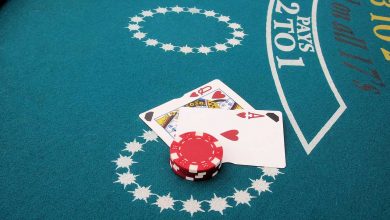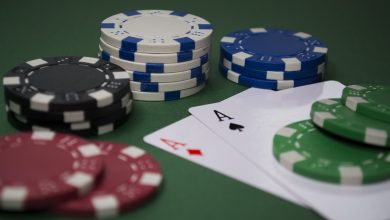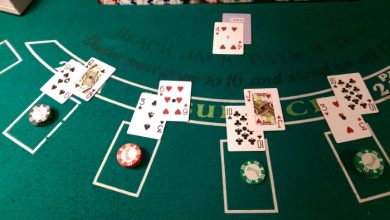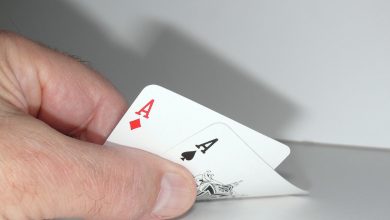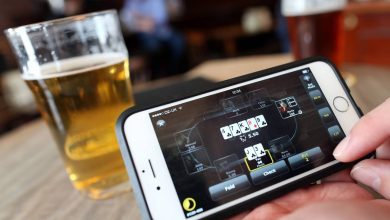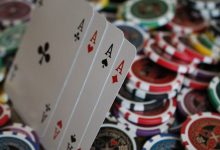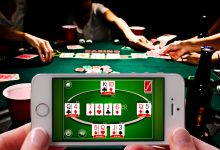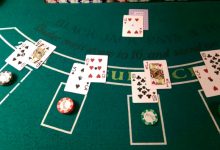
In Blackjack every player plays his hand out against the hand of the dealer and not against other players at the table. The purpose of the game is to draw cards until their total value is 21 or as close to it as possible without going over it. If the value of the player’s first two cards equals 21, he has a blackjack.
Rules
If the value of the player’s hand is closer to 21 than that of the dealer’s, the player wins the amount of his bet. In case of blackjack, which is a total of 21 points in the first two cards (ace + any card valued at 10 points), the player wins with the payout of 3:2 odds, assuming that the dealer’s hand is not a total of 21. The aces are counted as 1 or 11. The 10, Jack, Queen, and King are valued at 10. The remaining cards from 2 through 9 are valued as indicated. If the value of the player’s hand is over 21 then it’s called a “bust” and the player loses his bet. If the total of the player’s hand and the dealer’s hand is the same, but at least 17 points, nobody wins. The player receives his bet back. Blackjack beats the hand value of 21 (explanation further on).
Casinos use six decks of cards which are shuffled after each game. The game is based on the standard “Las Vegas Strip” rules with the following exceptions:
· The player can double down after the split.
If the player is dealt a matching pair of cards (e.g. two Queens), he can split the hand into two independent hands and play them separately by making the same bet on both of them. He is allowed to draw additional cards for each hand, however, if his original pair was two aces, he can draw only one card for each hand. If the player decided to split a pair of aces and one or two hands have the value of 21 point then they are not called a blackjack but a regular 21. The player is not allowed to resplit hands that have already been split.
Double down
If the player received his first two cards and he believes that he can win against the dealer by drawing just one additional card, he can opt for so called “double down” and double his bet. If the value of the player’s hand is higher than that of the dealer’s, the player’s winning is doubled. Doubling down allows players to double their bets and receive only one additional card to the hand.
Insurance
This option gives the player a chance to insure his bet in case when he believes that the dealer may have a blackjack. If the face-up card of the dealer is an ace and the player believes that the second card may be a 10, he may decide to buy an insurance against a blackjack at the price of half of his original bet. If the dealer has a blackjack the player’s winning insurance bet will be paid at odds of 2:1.If the dealer does not have a blackjack, the player loses his insurance bet. The player’s original hand is compared with that of the dealer’s. If both the player and the dealer have a blackjack, it’s a draw.
The table below shows a basic strategy, when to decide to make certain moves.
| Player’s cards | Dealer’s card | |||||||||||
| 2 | 3 | 4 | 5 | 6 | 7 | 8 | 9 | 10 | A | |||
|---|---|---|---|---|---|---|---|---|---|---|---|---|
| Hard Totals | 5-6-7-8 | H | H | H | H | H | H | H | H | H | H | |
| 9 | H | D | D | D | D | H | H | H | H | H | ||
| 10 | D | D | D | D | D | D | D | D | H | H | ||
| 11 | D | D | D | D | D | D | D | D | D | H | ||
| 12 | H | H | S | S | S | H | H | H | H | H | ||
| 13-14 | S | S | S | S | S | H | H | H | H | H | ||
| 15-16 | S | S | S | S | S | H | H | H | H | H | ||
| 17-18-19-20-21 | S | S | S | S | S | S | S | S | S | S | ||
| Soft Totals | A-2(13), A-3(14) | H | H | H | D | D | H | H | H | H | H | |
| A-4(15), A-5(16) | H | H | D | D | D | H | H | H | H | H | ||
| A-6(17) | H | D | D | D | D | H | H | H | H | H | ||
| A-7(18) | S | D | D | D | D | S | S | H | H | H | ||
| A-8(19), A-9(20) | S | S | S | S | S | S | S | S | S | S | ||
| Splits | A i A | SP | SP | SP | SP | SP | SP | SP | SP | SP | SP | |
| 2 i 2 – 3 i 3 | SP | SP | SP | SP | SP | SP | H | H | H | H | ||
| 4 i 4 | H | H | H | SP | SP | H | H | H | H | H | ||
| 5 i 5 | D | D | D | D | D | D | D | D | H | H | ||
| 6 i 6 | SP | SP | SP | SP | SP | H | H | H | H | H | ||
| 7 i 7 | SP | SP | SP | SP | SP | SP | H | H | H | H | ||
| 8 i 8 | SP | SP | SP | SP | SP | SP | SP | SP | SP | SP | ||
| 9 i 9 | SP | SP | SP | SP | SP | SP | SP | SP | S | S | ||
| 10 i 10 | S | S | S | S | S | S | S | S | S | S | ||
-
- H- Hit
-
- D- Double
-
- S- Stand
-
- SP- Split
The player has the following options:
· stand (stop at the current total)
· double down. If the total of the first two cards is 10 or 11, the player is given a chance to double his bet. If this option is chosen, the player is dealt only one extra card to his current hand.
· split. If the player has a matching pair of cards, he is allowed to split them into two hands. From that moment on he will be playing two separate hands. He may draw cards for each hand independently. Resplitting is not allowed. A blackjack after a split is paid 1:1 instead of 3:2.
· insurance. When the dealer’s face-up card is an ace, the player is given an option of buying an insurance in case of the dealer blackjack. The amount of this side-bet is the half of the original bet.

